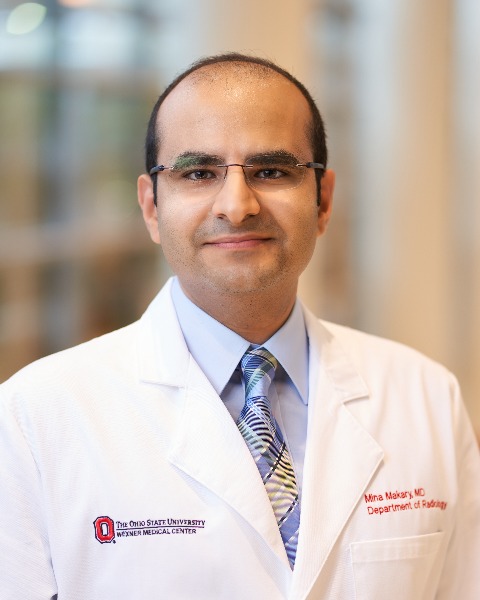SIR 2025
Practice Development
Educational Exhibit
Launching a New Service Line: Geniculate Artery Embolization

Christian Asumadu, MD
Resident
The Ohio State University, United States- JT
Jacarri L. Tollette, MD, BS
Resident
The Ohio State University, United States 
Mina S. Makary, MD (he/him/his)
Interventional Radiologist
The Ohio State University Wexner Medical Center, United States
Abstract Presenter(s)
Author/Co-author(s)
To investigate geniculate artery embolization (GAE) in managing knee osteoarthritis (OA) compared to traditional therapies. To identify indications for GAE for candidates seeking alternatives to traditional therapies. To demonstrate how GAE compliments traditional therapies and how to communicate benefits to referring physicians. To provide interventional radiologists with information about procedural techniques and clinical outcomes of GAE. To explore opportunities for continuous education and professional development to optimize GAE utilization and patient management.
Background:
Knee OA is a degenerative joint disease leading to loss of articular cartilage, joint disruption, chronic pain, and disability. Traditional management varies by severity, ranging from conservative treatments to total knee replacement. GAE is a minimally invasive procedure that reduces blood flow to the knee’s synovium to reduce pain and inflammation. GAE can serve as a complement treatment for mild to moderate knee OA, postponing surgical replacement or offering an alternative to surgery for patients who want to avoid surgery or patients who are not surgical candidates. Establishing GAE as a new service line requires a comprehensive understanding of its clinical applications and procedural details, incorporating it into current care protocols, and developing a patient and referring physician education strategy. Interventional radiologists must be committed to remaining updated on the latest advancements in GAE to maintain high standards of practice and ensure the best possible outcomes for patients.
Clinical Findings/Procedure Details:
This educational exhibit will discuss the pathophysiology of knee OA and emphasize the role of GAE as a treatment option. It will guide interventional radiologists in identifying optimal candidates for GAE and provide strategies for effectively marketing and educating patients and referring physicians about its benefits as a complementary treatment for Knee OA. Additionally, the exhibit will empower interventional radiologists with data from clinical trials on the efficacy of GAE and offer tools for independent study to promote high standards of practice.
Conclusion and/or Teaching Points:
This exhibit will provide a framework for launching a GAE service line by equipping them with resources and tools to educate patients and referring physicians, utilize GAE to complement other forms of Knee OA management, and develop high standards of care via learning from literature, conferences, and experienced physicians.


.jpg)